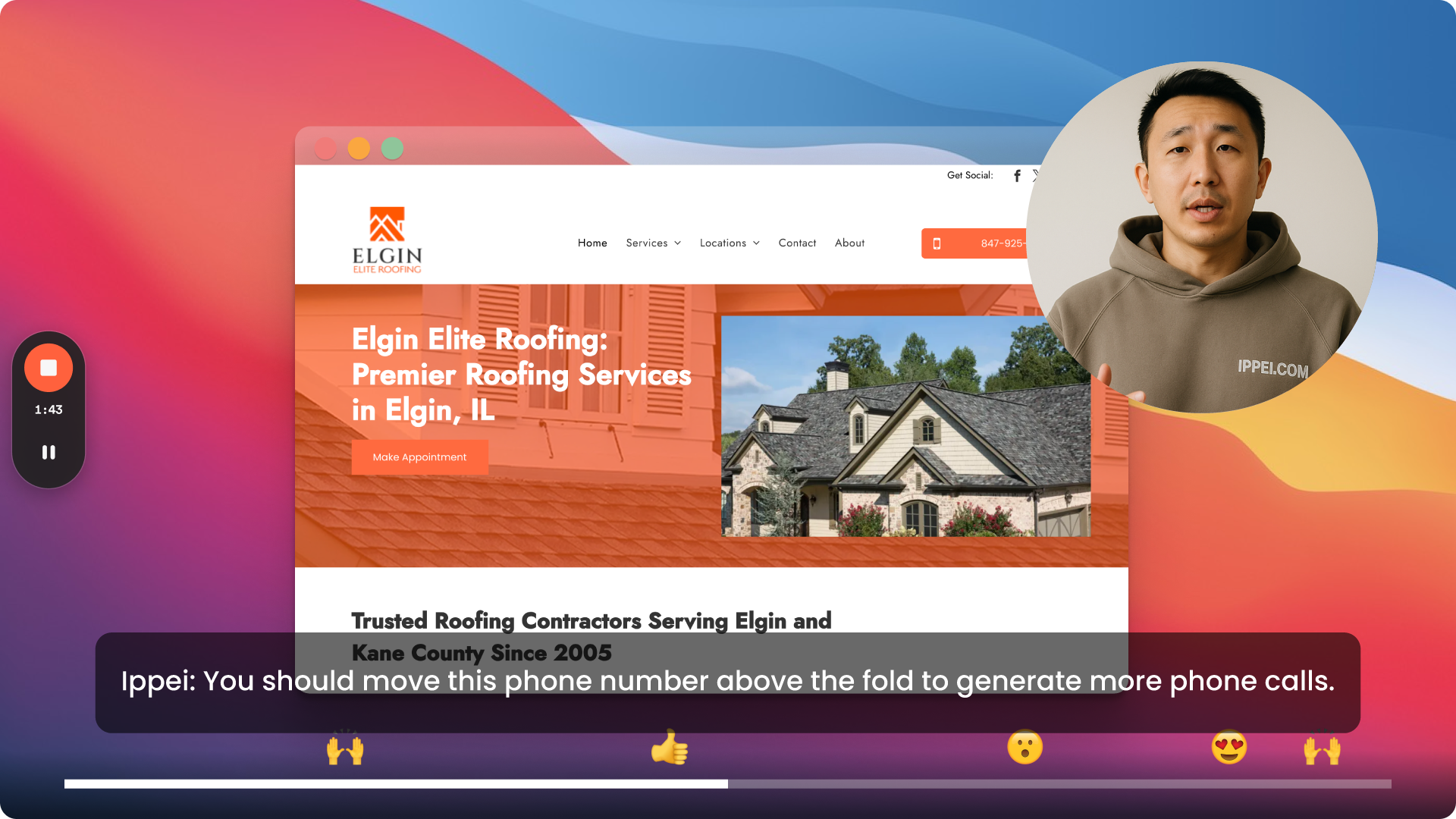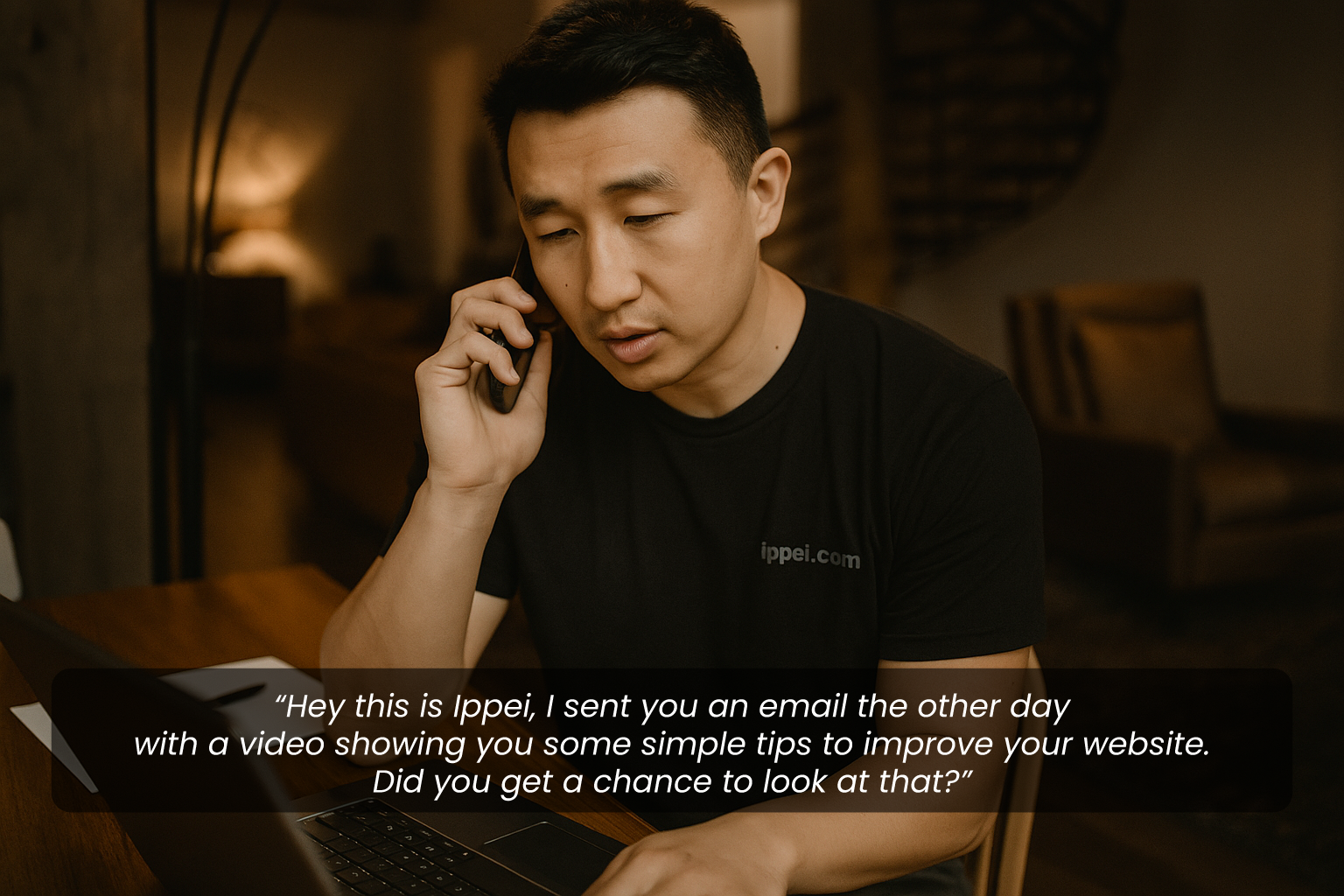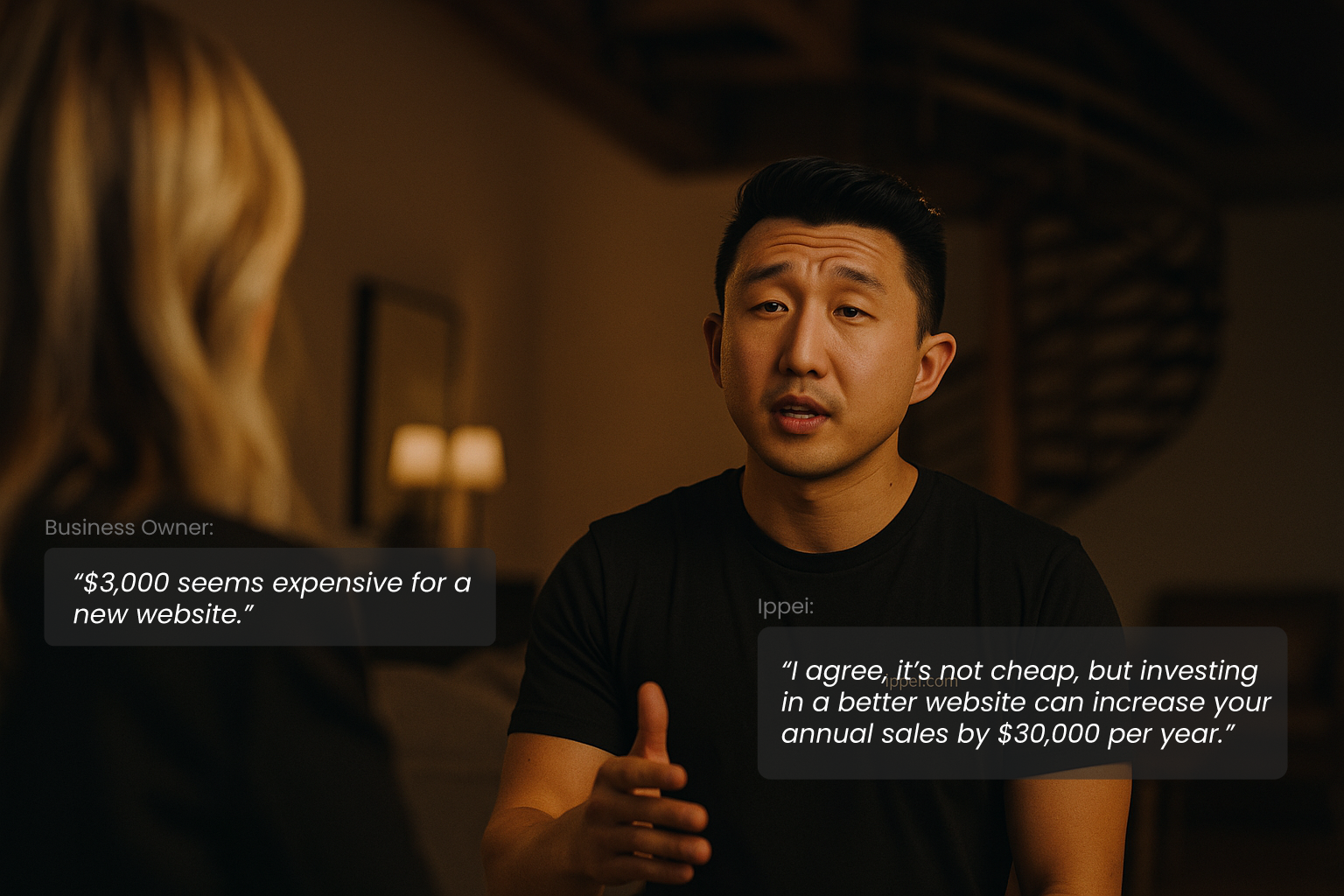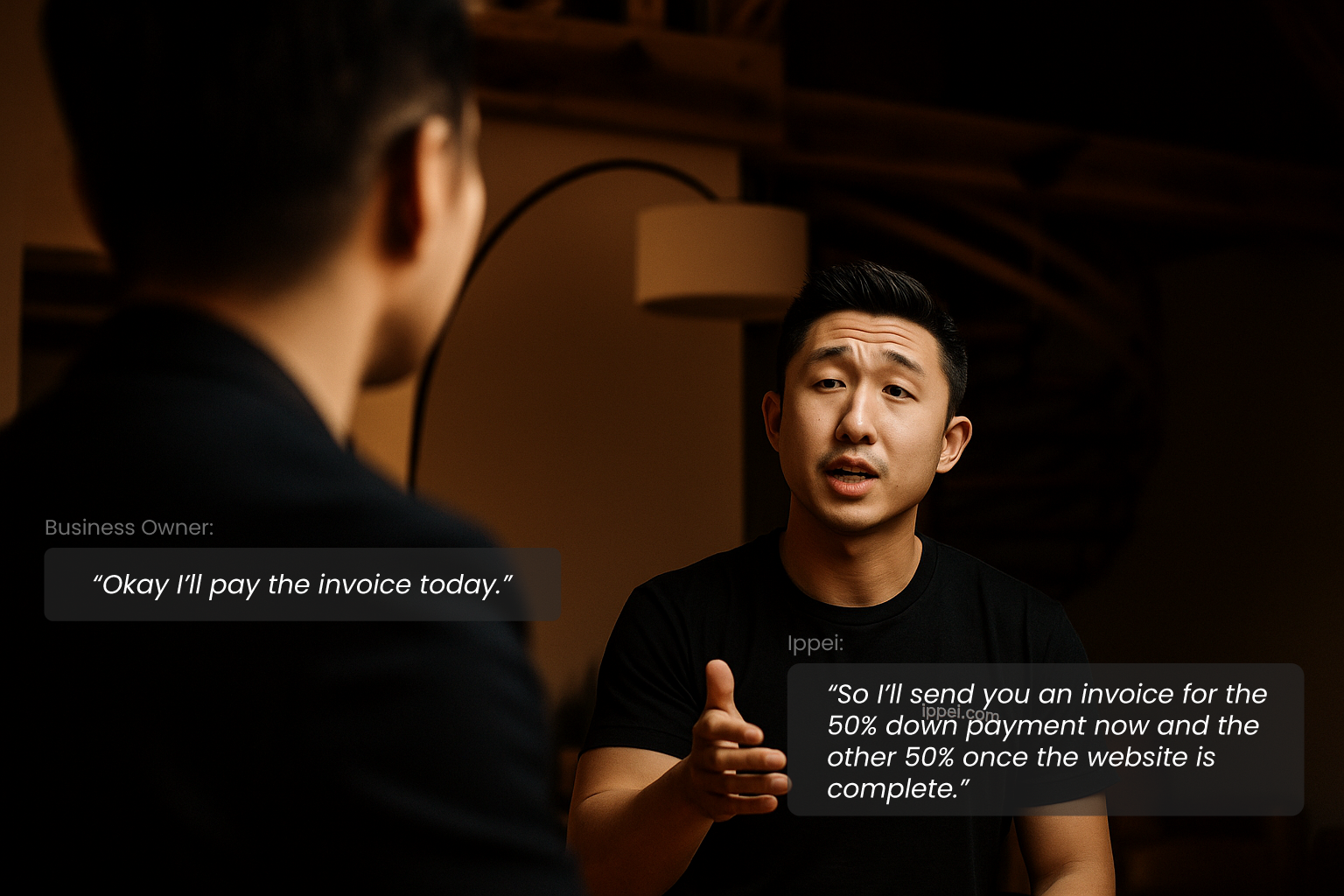How To Sell Website Builds for Fast Money To Fund Your Local Lead Generation Business | 7 Quick Steps
To sell website builds for fast money to fund your local lead generation business:
- Choose a website platform you can build fast with
- Define your website build offer
- Set pricing for your website builds
- Find businesses with poor or no website to pitch your website builds to
- Contact businesses to pitch your website builds to
- Handle objections the business has about paying you for a website build
- Close the business on your website build
I’ve found selling website builds to be one of the most effective strategies to fund a local lead generation business. It leverages essentially the same skills that a lead generation business requires to generate immediate, onetime income rather than long-term, passive income. Although I prefer local lead generation, I still sell website builds for extra income today. In the following article, I break down the seven key steps to make money from website builds to fund your local lead generation business.
1. Choose a website platform you can build fast with
Set up an account at Snapps.ai to manage and build all your website builds.
Leverage the Snapps AI website builder, readymade website templates, and the drag-and-drop website builder to build and deploy websites quickly for your clients.
Snapps is the best website builder platform for selling website builds and doing the local lead generation business model. Each Snapps website includes high-quality hosting, combining Amazon Web Services (AWS) and a CloudFront CDN to provide a 99.99% uptime guarantee. This allows Snapps websites to be much faster than other website stacks, such as using Bluehost for a WordPress website.
Websites that load in one second have a conversion rate 3x higher on average than websites that take 5 seconds to load, according to Shopify data. Furthermore, site speed is a known Google ranking factor, so faster sites have better SEO. As such, higher conversion rates and better SEO are potential selling points for selling your website builds to businesses with lower quality website setups.
2. Define your website build offer
List out the exact deliverables you will provide when someone pays you for a website build. That includes aspects like the number and types of pages, website support services, and the expected turnaround time for the project.
Here are my website build deliverables for my DFY websites I sell as an example.
If you need more inspiration in deciding what your website build packages should offer, look at the different website build packages offered on Fiverr to see what others are offering.
Defining your exact offer before pitching your website builds sets clear expectations for both you and the client. Businesses want to understand what they are paying for when considering a service. A well-defined offer can lead to upwards of 68% more sales opportunities, according to Leads at Scale.
3. Set pricing for your website builds
Decide on a flat rate to charge for your website builds that falls within the standard market range. Small business website builds generally cost between $300-$3,000.
Here is one of our students from our private community talking about selling a website build for $3,000.
Set up a tiered pricing system if you want to offer various levels of website build packages to accommodate more businesses.
For example, one Fiverr seller charges $150 for a single page WordPress website while he charges $650 for a WordPress Ecommerce website with 10 pages.
Flat rate pricing is preferable to most small businesses as it offers transparency about the precise amount a business will pay for the website. That makes it easier for the business owner to say “yes” to your offer. Setting a clear price also allows you to benefit from price anchoring. If a potential client sees that you sell a website package for $1,000 but on the sales call you tell them you can give them a discount for $900, you can increase your chance of landing the deal because the prospect feels they are getting a good deal.
4. Find businesses with poor or no website to pitch your website builds to
Uncover local businesses with poor websites or without websites by searching for local services in various cities. Use the “city + niche” keyword structure to search.
To find local businesses with poor websites, start on the second page of Google for the target keyword. Website owners not already ranking on the first page are most likely to be interested in a website update to improve their performance.
Click through each of the businesses websites to analyze their quality. Check for design flaws and local SEO issues, like we teach in the program. One thing to look for is slow loading websites. Use the Google PageSpeed Insights tool to look for websites that take longer than 3 seconds to load.
To find local businesses without a website, click on “More businesses” in the Google Local Pack to see all the businesses with a Google Business Profile in the area.
Look for businesses missing a website link attached to their Google Business Profile.
Approximately 27% of small businesses in the US don’t have a website, according to Wix. Data from Liquid Web highlights that 67% of businesses report losing revenue from poor website performance. A study by Search Engine Journal found that 81% of customers think poorly of a business if the website is outdated, negatively affecting its sales prospects. As such, there are vast opportunities to sell website builds to enhance online visibility for local businesses and sufficient reasons for them to invest in your services.
5. Contact businesses to pitch your website builds to
Reach out to prospects through cold emails, cold calls, and social media to point out their website issues and promote your website builds.
Record a screencast to highlight the primary issues with a prospect’s website using a screen recording tool like OBS Studio, Loom, or ScreenPal if the business already has a website. Provide insights on how they can improve their website to prove your value and expertise.

Send your target business an email to introduce your business and service offer. Include the link to the screencast if you recorded one for them. Warm up the email inbox with an email warmup tool like Warmup Inbox before sending your cold emails if you haven’t already to maximize your email deliverability rates.
Follow up the email by calling the business directly to pitch your offer if they haven’t responded. Direct them to the email with the screencast link if they have a website to better understand their website issues and how you can fix them.

Find and direct message target businesses on social media if you can’t reach them through cold email or cold calling. Send them the screencast link if they have a website.
Cold email is typically the first channel in a sales outreach campaign because it’s highly scalable, especially if you want to send the same email to a list of prospects. However, cold calling has an average response rate 5% higher than cold emailing, according to Jobera. Cold calling also allows for a faster sales process because you can qualify and potentially pitch a business owner directly on the call. Direct messaging on social media can also be effective. Direct messaging prospects on social media commands an average conversion rate of up to 5%, according to social media marketing agency Ma Team.
6. Handle objections the business has about paying you for a website build
Overcome prospect concerns about buying a new website from you by emphasizing the business’s pain points and showing how a new website can help improve their digital marketing performance.

Some common objections business owners have about paying for new websites include:
- “It’s too expensive.”
- “I don’t need a new website.”
- “I can make the website myself for cheaper.”
- “I don’t want to lose what I have.”
- “We’re planning on doing that in the future.”
- “We already have someone working on our website.”
- “I don’t need a fancy website.”
One Reddit user overcame the “I don’t need a fancy website” objection by emphasizing the leads and sales a new website can generate with SEO.
Objection handling is a vital part of the sales process because most customers aren’t ready to purchase after the first pitch. In fact, approximately 60% of customers say “no” four times before saying “yes”, according to Cloud Talk. People who excel as objections handling can improve sales conversion rates by up to 64%, shows data from HubSpot.
7. Close the business on your website build
Agree on the project terms with the business owner and coordinate payment. Confirm project aspects like:
- Timeline (e.g., 1-2 weeks)
- Scope of work (e.g., 5-page website, mobile-responsive, basic SEO)
- Payment terms (e.g., 50% upfront, 50% on delivery)
- Revision policy (e.g., 1–2 rounds)
Set up a payment processor like Stripe, Paypal, or Zelle if you haven’t already for convenient online payments. Send your invoice directly after the business owner agrees to the terms.

Coordinate access to any applicable accounts or files required for the website build. That includes their website domain if they already have one or branding files, like their logo and color scheme.
Upon closing the client, make sure you have everything you need to start the project and get paid. Collecting all the project materials showcases your expertise on executing web build projects. Sending the invoice promptly after the agreement maximizes the likelihood of a successful deal closure while it’s fresh in the prospects mind.
Why is local lead generation better than selling website builds long term?
Local lead generation is better than selling website builds long term because:
- Your income from a client is uncapped - A website build is a one-time fee while a local lead generation deal results in recurring monthly income.
- You own the asset - With a website build, the client owns the asset, so they can hire someone else for ongoing SEO. With local lead generation, you own the site, which means you can swap out clients anytime and still keep earning from the same asset.
- It’s easier to sell actual results than speculative results - Selling website builds involves highlighting the potential results a business could experience with a better website. When selling local lead generation, you can generate leads in advance to let the business test out, resulting in easier sales conversions.
- It’s easier to scale - The amount of website builds you can sell is limited by the amount of hours you can work. Once you build and rank a local lead generation property, it can generate income with minimal maintenance so you can continue earning income from old assets while having time to create new ones.
How to start a local lead generation business after selling website builds?
To start a local lead generation business after selling website builds:
- Select a local lead generation niche to target
- Find markets with low competition
- Use your website builds income to set up local lead generation properties
- Implement a local SEO campaign to rank the websites
- Pitch local clients your leads
Conclusion: Should you sell website builds for fast money to fund your local lead generation business?
You should sell website builds for fast money to fund your local lead generation business if you have less than $5,000 in startup capital and don’t want to fund your business with credit card debt. Although local lead generation websites can generate $500-$3,000+/month once they’re up and running, they cost anywhere from a few hundred to a few thousand dollars to rank. Furthermore, ranking locally typically takes between six weeks to six months or more. By selling website builds, you can support yourself while you’re building your business and invest the extra cash into local lead generation assets that can make you passive income a few months down the road.
Website builds are one of the most lucrative and fastest ways to make money online from the skills we teach you in our local lead generation program.

Follow Me
Ippei Kanehara
Founder/CEO
$52K per month providing lead generation services to small businesses
Ippei.com is for digital hustlers, industry leaders and online business owners.
His #1 online business recommendation in 2024, is to build your own lead generation business.